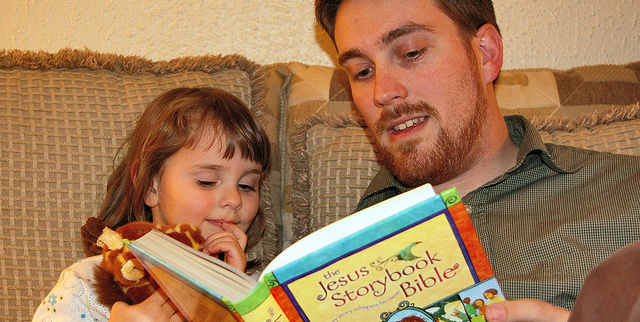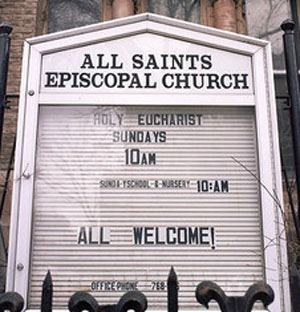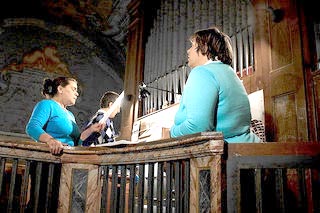 Preaching Past the Pews
Preaching Past the Pews
Think about what goes into the staging and delivery of the weekly sermon.
- Divide your pastoral salaries by 52 and then divide by five. That’s what you paid your professional leaders for the week’s sermon.
- Then add the costs of maintaining a building.
- Add heat and air conditioning costs.
- Now add the costs of the other professionals who help set the stage for delivery of the service—the sexton, organist, and choir director.
- Add the cost of the church secretary and the cost of printing the bulletin.
- We won’t add the costs of the many volunteers, but they added to the experience, too.
These costs and efforts are repeated every week. The beneficiaries—the people in the pew—are likely to be the same people every week. They number between 15 at the low end and 700 or so at the high end. The median congregation is probably less than 75 per church.
Advertisers call this calculation the cost per impression. Church costs per impression are very high indeed.
Oddly, this is never seen as squandering resources. Why not?
Because it defines Church. This is what churches have done for 2000 years.
We are well into the 21st century. The internet has been around for about a quarter century. It gets more powerful every day. It also gets easier to use. We are capable of so much more than monks with their parchment and pen.
The same message delivered in your church on Sunday can and should be preached beyond the back pew. This does not mean printing the sermon on the web site. This will attract practically no readers—except perhaps other preachers looking for ideas!
Put the Same Information Into Different Formats
Reach Far More People
There are ways that a sermon delivered to very few (even in well-attended churches) can reach into the neighborhood. Done consistently it is likely to attract people to your ministry.
We could take any sermon as an illustration. We’ll take for example the sermon that our Ambassadors heard last week at Trinity, Norristown. It’s fresh in our experience. Like most people, we don’t remember sermons very long.
The source scripture for the day was the story of the Apostle Philip’s encounter with the Ethiopian eunuch. The eunuch was sitting in his chariot, minding his own business, trying to make sense of the book of Isaiah. Along comes Philip, who might have passed up the opportunity to share, except that he was following orders from God. Soon the two were chatting about Jesus.
The sermon was delivered by one of Trinity’s three pastors, the Rev. Dr. Asha George-Guiser.
The gist of the sermon was the “blasting of barriers.” She pointed out that Philip and the eunuch could not have been more different, yet both were able to come together and talk about scripture.
Dr. George-Guiser focused her entire sermon on just one illustration—her marriage. She is of Indian descent, tracing her Christian roots to the evangelistic efforts of the Apostle Thomas, father of the church in India. Her husband of many years is also a pastor of Trinity. He comes from a non-religious Pennsylvania farm family and is racially White.
Dr. George-Guiser talked about how difficult it was for her family to accept her marriage. Their many differences were barriers that took years to blast away. Blasting away at the barriers led to a long and happy union.
Great illustration. It probably resonated with the congregation of about 70, many of whom probably know both pastors very well.
The service was at 11 am. By noon, the sanctuary was empty. The message and sermon were already on their way to oblivion to await the message of next Sunday. The shelf life of a sermon is very short.
How could the same sermon be repurposed to reach many who were not present in church last Sunday?
- What if earlier in the week, the congregation had been invited on a church blog or Facebook to identify barriers in their lives? Anyone taking part in that conversation would be more invested in the worship service.
- What if illustrations of barriers in the community had been identified and addressed on the blog? People who might never set foot in a sanctuary but who discovered the blog because of their community interest would see a church in action. The church web site would find more and more readers.
- What if photos of barriers in the neighborhood had been posted on Pinterest with a link back to a discussion on the church blog? The congregation would have even more exposure in the community.
- What if a few memorable snippets from the sermon were recorded as a podcast? Commuters might listen during the week as they drove to work.
- What if a Powerpont with key sermon ideas had been posted on SlideShare? Other churches might share it.
- What if the same Powerpoint were used in worship to illustrate the sermon? They were using projection for every other part of the service. It might extend the short life of the average sermon.
- What if a children’s version had been posted on a kid’s corner on the web site?
The possibilities are many.
It’s more work to be sure, but suddenly that $1000 investment in a weekly sermon is going much farther.
Your church can go from talking about “blasting barriers” to actually lighting a fuse!
Do you see why having a communications expert is just as important to today’s church as an organist or a choir director? They can help maximize your investment spreading the Good News. It changes everyone’s job description a bit, but if transformation is to occur, something’s got to give!
Warning! The effectiveness of a church communications plan fashioned to reach beyond the pew is a marathon. If you want to give it a try, plan to dedicate a year minimum to begin to see results. By year three it should be reaping benefits you’d never imagine going without!







